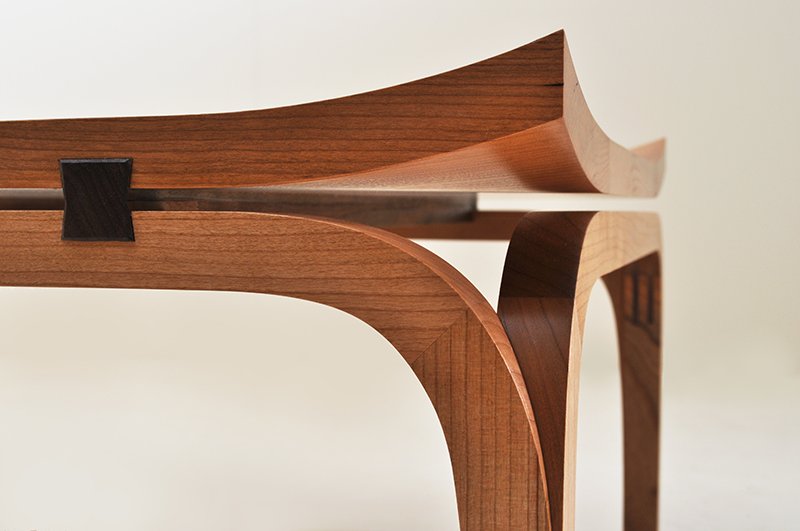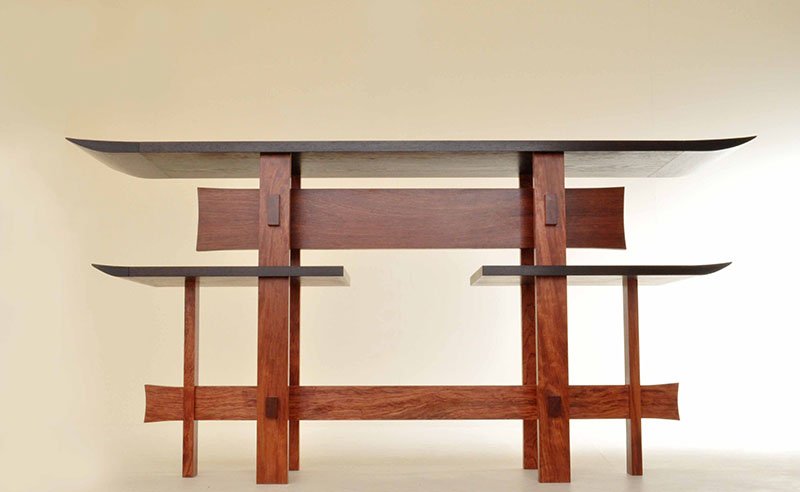Japanese inspired furniture - student project



Our students initially undertake several small set projects that teach essential hand/machining and construction methods… but then they move on… with the freedom to create their own projects.
It’s always interesting to hear where students draw their design inspiration from.
Sometimes student’s designs can be rooted in their cultural background and influences, some have taken inspiration from nature, or a particular designer/artist they admire. On occasion, design might be inspired by the opportunities that new processes and materials provide.
In recent years, Japanese inspired furniture design has been popular with some of our students.
Last year, student, Alistair Buchan produced his Torii gate table as one of his major projects on the course. A Torii gate is a traditional Japanese structure most commonly found at the entrance of, or within a Shinto shrine, where it symbolically marks the transition from the profane to sacred.
In Ali’s side table design, the interpretation of the Torii gate translated well, and the end cleated table top is visually striking.
Our current student, Henry, has also just completed a low Japanese style coffee table in Cherry and Walnut.
Henry’s design was partly inspired by the Bundai table. A Bundai is traditionally a special Japanese writing table, commonly used at special gatherings for composing renga linked verse, haiku and other forms of poetry. Since Bundai are more emblematic of aesthetic taste than practical in function, they are generally quite lavishly crafted. For Henry, it was the legs of the Bundai table that were of particular interest, as traditionally both the legs and tops are undercut in decorative designs.
The legs of Henry’s table are mitred together, a jointing technique that was of particular interest to Henry in making this project. It is a finely executed piece, which is shown by the corner detail and by the underframe reflecting the flair curve on the table top. These details created a considerable challenge in the making for Henry.
Japanese carpentry is traditionally intimately bound up with the history of architecture in Japan. The Sashimono-shi are carpenters that craft more general furniture such as chairs, and cabinets, but there are three further woodworking professions who are distinct in the experience with various forms of joinery. The Miyadaiku – carpenters that practice the construction of Japanese shrines and temples (known for their use of elaborate joints to make well-structured and extremely long lasting structures); The Sukiya-daiku, carpenters famed for their delicate and aesthetic constructions such as staircases and window frames; and the Tateguya are interior finishing carpenters who build shoji (Japanese sliding doors).
Japanese woodworkers have created aesthetically beautiful and effective joinery, closely related to Japanese architecture, centuries prior to the invention of screws and fasteners. It is the work of tightly slotting together pieces of timber, joinery that does not require materials such as stitching, glue or nails due to the complex carved interlocking wooden joints. Japanese joints are typically durable, tough, visually appealing and efficient on materials.
For Ali, the design and making of his side table was directly inspired by the Japanese architecture of the Torii Gate. Whereas for Henry, the inspiration was in the complexity and use of elaborate joints and shaping of his table.

